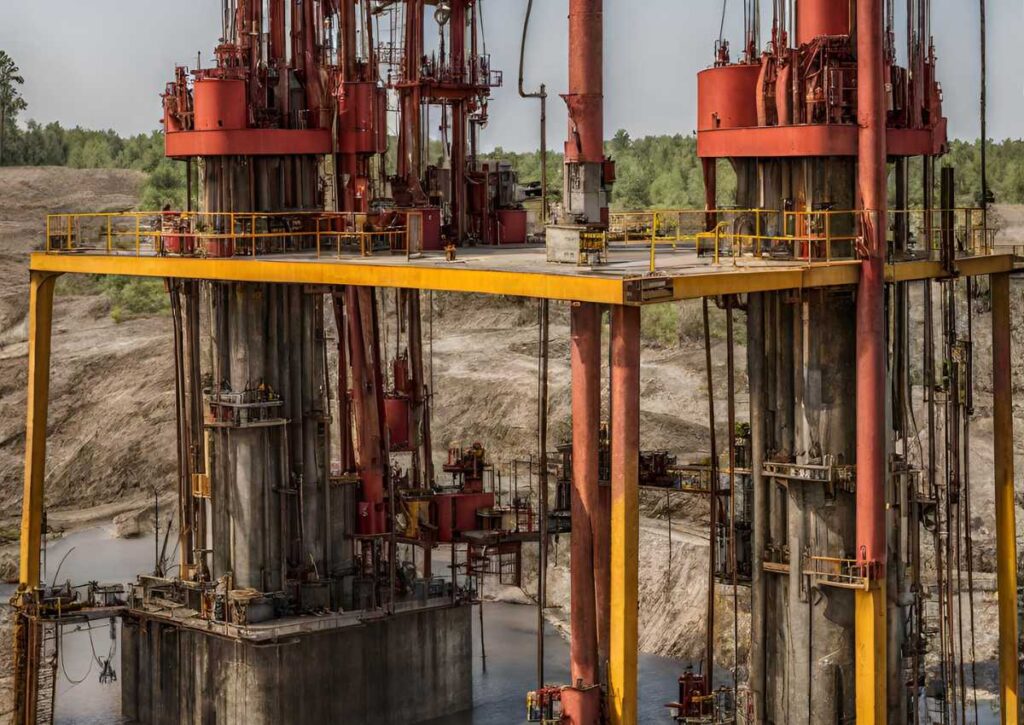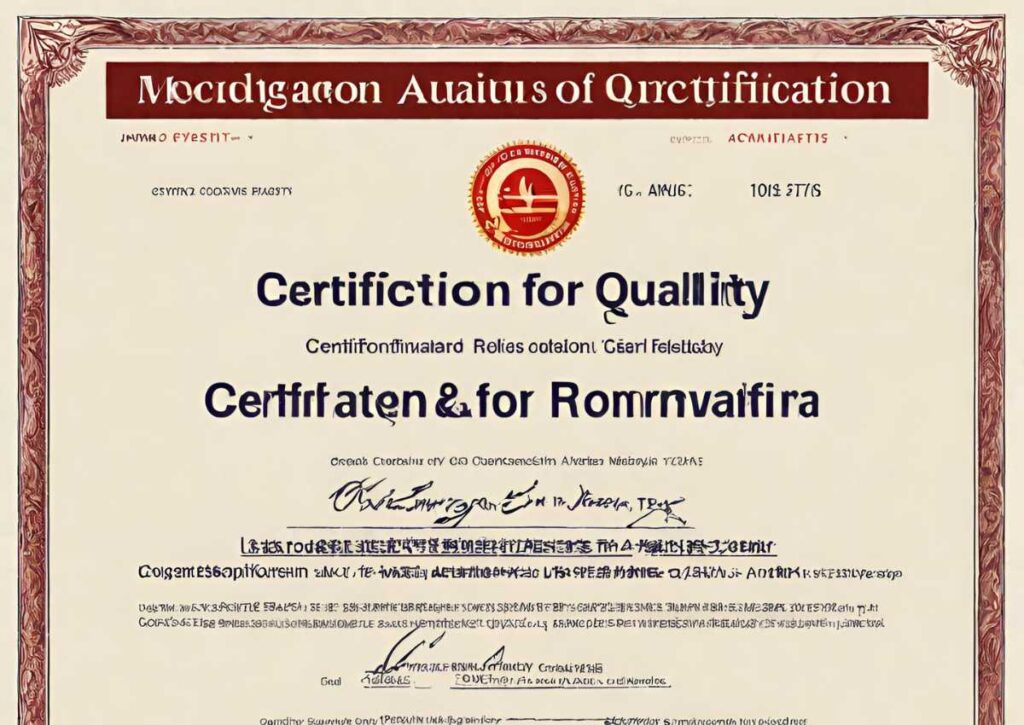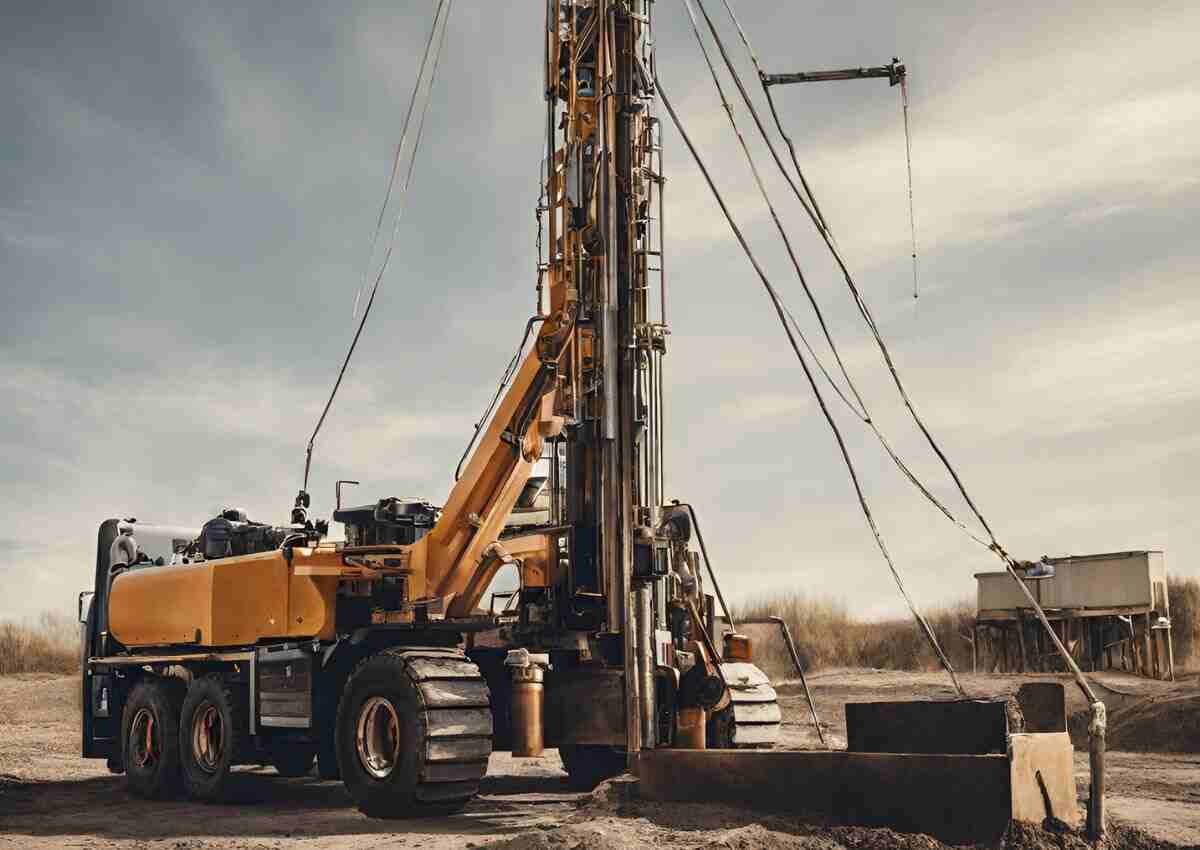In most cases, customers finance well-drilling initiatives, not corporations. Well-drilling businesses provide drilling skills and services, but clients must fund them with personal savings, bank loans, or other financial sources.
Yes, well-drilling companies typically finance their operations through bank loans, private investments, or equipment financing to cover the costs of machinery, labor, and drilling operations.
Exploring the ways in which Well Drilling Companies finance their operations reveals a dynamic interplay between internal capital, bank loans, and strategic investor partnerships, crucial for industry growth.
Explore is well drilling Companies Finance
Gain in-depth insights into financing for well-drilling firms, delving into diverse strategies and funding options tailored for this specialized and crucial industry.
From traditional loans to innovative financing models, explore the dynamic landscape that fuels successful operations in well drilling.
Initial Capital Investment

Beginning a well-drilling business demands a lot of capital. The most expensive part is drilling equipment, from small portable rigs to enormous, complicated machines.
Equipment expenses vary substantially by rig type and capability. Many well-drilling enterprises start with personal savings, bank loans, and partner investments.
Before seeking finance, well-drilling companies need a detailed business plan. This plan should incorporate company goals, target market, services, revenue, equipment, and asset budget.
Equipment Research And Selection
Researching available drilling equipment is crucial to determining the most suitable rigs for the company’s intended services and target market.
Factors like drilling depth capabilities, portability, and maintenance requirements should be considered. The cost of the equipment plays a pivotal role in setting an accurate budget.
Cost Estimation

A detailed cost estimation is prepared based on the chosen drilling equipment and additional assets such as trucks, pumps, pipes, and safety gear.
This step helps determine the total amount required for the initial capital investment.
Personal Savings
A lot of people start their well-drilling businesses by spending their savings.
These actions not only show support and belief in the business, but they also provide a starting financial base.
Seeking Partners Or Investors
Some startups seek investment from partners or investors willing to contribute financially to the business.
These partners may share an interest in the industry or believe in the company’s growth potential.
Government Grants Or Assistance
Depending on their region, well-drilling firms may qualify for government grants or financial aid. The business owner can reduce initial capital investment costs with these grants.
Equipment Financing
Well-drilling companies may look into financing options for their equipment, where the equipment supplier offers financing or lease agreements.
This helps spread the cost of the gear out over time.
Budget Management
Once the money is in place and the equipment is bought, it is essential to stick to the budget.
To stay profitable and encourage growth, businesses should keep an eye on their costs, keep extra costs low, and ensure they use their resources effectively.
Scaling And Expansion
As the well-drilling business grows and generates revenue, companies can reinvest profits to expand their equipment fleet and services, further fueling growth.
Bank Loans
A lot of the time, well-drilling companies get loans from banks to run their businesses.
Banks give different kinds of loans, like term loans, equipment financing, and lines of credit, to help businesses manage their cash flow, get the equipment they need, or grow their services.
To get a bank loan, you usually need a well-organized business plan, financial records, and a solid plan for how to pay back the loan.
Essential steps in this process include:
- Doing a complete financial analysis.
- Figuring out how much money you need.
- Carefully choosing the right type of loan.
Financial Assessment
Before approaching banks for loans, well-drilling companies must conduct a thorough financial assessment.
This includes evaluating the company’s financial situation, cash flow, and creditworthiness. Lenders scrutinize these aspects to assess the risk associated with lending.
Identify Funding Needs
Determine the specific funding needs of the well-drilling business, whether it involves purchasing new drilling equipment, expanding operations, or covering working capital requirements.
Business Plan Preparation

Make a well-organized business plan including the company’s goals, a market analysis, a list of its ideal customers, competitive advantages, income projections, and a clear plan for paying back the loan.
Clarifying how the loan will help with growth and earnings is essential.
Loan Type Selection
Do a lot of research on the different types of available bank loans and make decisions that align with the well-drilling company’s budget and ability to pay back the loan.
Compile Financial Statements
Make sure your financial records are correct and up-to-date. These include balance sheets, income statements, and cash flow statements.
They show how well the business is doing financially and how likely it is to be able to repay the loan.
Check for Creditworthiness
Check to see if the well-drilling business has a good credit history.
Banks check a business’s trustworthiness and may look at the owner’s credit score if the company is new or has a short credit history.
Loan Application Submission
Send the chosen financial institution a complete loan application that includes all the necessary papers, such as the business plan, financial statements, information about the collateral, and any other information they may ask for.
Negotiation And Terms
You should be ready to talk to the bank about the loan terms, such as interest rates, payback terms, and other loan conditions.
Better loan terms can be reached if you go into negotiations well-prepared and educated.
Loan Approval And Utilisation
The well-drilling company can get the money and use it for the agreed-upon purpose as soon as the bank accepts the loan.
It is essential to manage funds properly and give them the right things.
Repayment Management

Make a firm plan to repay the loan so the company can meet its responsibilities on time.
Responsible and on-time payments will help you keep your credit score high and may even help you get loans in the future if you need them.
Private Investors And Partnerships
Some well-drilling companies look for private buyers to fund their projects or form partnerships with people or groups that want to invest in the business.
These investors might bring more knowledge or ties to the industry to help the business grow.
Investor Research
Find private investors interested in the well-drilling business or companies with similar goals and values.
Look for investors who can do more than just give you money. For example, they could know the industry, valuable networks, or a shared goal for the growth of the business.
Business Valuation
Find out how much the well-drilling company is worth before you try to get partners.
This means looking at the business’s assets, ways of making money, ability to make money, and growth prospects.
A well-organized financial study will help determine how much the business is worth and the money it needs.
Pitch Preparation
Make an exciting and complete pitch to show possible investors. The rise should talk about the company’s strengths, accomplishments, and plans for growth, as well as how the investor can help the business succeed.
Legal And Financial Planning

Get a lawyer’s help to ensure that business or partnership agreements are set up correctly.
Find out the purchase details, such as who will own the business, how the profits will be split, who will make the decisions, and how to get out of the deal.
Planning your finances is essential to ensure your finances are easy to handle.
Careful Attention
Investors will research the well-drilling company to see how healthy its finances are and what risks it might face.
Be ready to give the required paperwork and answer questions about how the business works and its plans for the future.
Negotiations
Talk about terms and conditions that benefit the investor and the well-drilling business.
Find a balance that ensures both sides’ goals are met and that the partnership works well for everyone.
Legal Documentation
Once everyone agrees on everything, write up legally binding contracts and spell out the rules of the partnership or investment.
These papers should look out for everyone’s best interests and make sure everyone knows their jobs and responsibilities.
Executing An Investment
Once all the details are worked out, put the investment or partnership into action by giving the well-drilling company money or other assets.
Ensure everyone knows what they need to do to keep the agreement going.
Collaboration And Communication
Ensure you have a good working relationship with the private backer or partner. Regular collaboration and conversation are necessary to maximize the investor’s knowledge and help.
Continuous Assessment
Always look at how the relationship works and how well it works. Monitor how the investment affects the business’s growth and make changes as needed to ensure long-term success.
Getting Rid Of Risks

Working together with private donors can bring in a lot of valuable resources, but it’s important to lower any risks that might come up.
Spread your funding sources, and don’t rely too much on one investor or partner.
Exit Strategies
Make sure that everyone knows how to get out of the deal. A clear exit strategy, like a buyout choice, selling shares to other investors, or the investor’s slow withdrawal, makes sure that things go smoothly if they need to.
Government Grants And Subsidies
In some areas, businesses in the water field can get help from the government through grants, subsidies, or low-interest loans.
Well-drilling companies might be able to get this kind of money, primarily if they work to improve access to clean water in places that don’t have it or take part in government-led efforts to save water.
Findings And Checking For Eligibility
Do a lot of research on the grants and subsidies that the government offers to the water sector.
Find the specific programs that help well-drilling companies and look at the requirements for each one.
Companies that work to protect water access or help areas that aren’t getting enough help often have a better chance of getting approved.
Application Preparation
Get all the paperwork and information you need for the application process.
This could include information about how the business is registered, financial statements, project proposals, and any other documents asked for in the grant application instructions.
Consultation With Government Agencies
Get in touch with the government offices or departments that are in charge of managing the grants and subsidies.
Find out more about the application process, requirements for eligibility, and special instructions to ensure your submissions are correct and complete.
Creating A Project Proposal
A well-drilling company’s goals, intended effect, implementation plan, budget, and expected outcomes should all be included in a well-structured project proposal.
Ensure to stress how the project fits the government’s goals and helps with water access or protection.
Following The Rules And Regulations
Make sure that the well-drilling business follows all safety and environmental rules as well as all government regulations.
Grants from the government often go to projects that use safe and ethical methods.
Project Proposal Development

Send in the grant or subsidy application by the due date and follow all the rules and directions given by the government agency.
Recheck the application to make sure it has all the necessary information and is complete.
Look Over And Judge
Governmental organizations will examine the applications to determine whether they are pertinent, practical, feasible, and aligned with government priorities.
There may be a strict evaluation and scoring method used in this process.
Award Choice
The government will decide who gets the award after the evaluation process.
Companies may get full or partial funding based on how much money is available and the competition.
Reporting And Following Rules
If the well-drilling business gets the grant or subsidy, it must follow the terms and conditions that were agreed upon.
This could mean giving the government body regular progress reports, financial statements, and project updates.
Proper Utilization Of Funds
Ensure that the government funds are only used for the approved project or reason.
Keep clear and correct financial records to show you manage the funds responsibly.
Project Implementation
Complete the job as quickly and correctly as possible. Projects must be finished on time and with good results to keep a good relationship with the government agency and get future funding chances.
Monitoring And Evaluation
Continuously monitor the project and think about its effects and progress.
Government organizations may visit or evaluate the project to see how well it’s going and ensure it follows the rules.
Revenue Generation

Once operational, well-drilling companies charge customers for their services.
Interest rates vary based on where you reside, how deep your well is, how intricate the geology is, and if you need water quality testing, well maintenance, or pump installation.
Reliable and fast services will bring customers back and encourage them to refer friends.
Market Analysis
Do a thorough market study to find potential customers and figure out how the competition is doing in the area.
Please find out how much people want healthy drilling services, the current market rates, and their unique needs.
Pricing Strategy
Come up with a pricing plan that works with the company’s costs, its profit margins, and the way the market is moving right now.
To determine the correct pricing structure, consider labor, transportation, drilling equipment repair, and any other services you offer.
Quote Preparation
Give your customers clear and accurate quotes for the drilling services they need.
The price should say what work needs to be done, how deep the well is expected to be, what tools will be used, and how much it will cost.
Contract And Agreement
Once the client agrees to the quote, make a contract or agreement that spells out the terms and conditions of the drilling job.
This document should clarify what each party is responsible for, when payments are due, and how long the job will take.
Efficient Project Execution
Do a skilled and efficient job with the drilling project. Finishing projects on time and budget builds the company’s image and builds trust with clients.
Quality Assurance And Safety

During the drilling process, stress, quality control, and safety standards Delivering high-quality work and keeping the workplace safe builds client trust and encourages good word-of-mouth referrals.
Some Extra Services
To make more money and meet your clients’ wants, offer extra services like testing the water quality, well maintenance, or pump installation.
Client Communication
Keep in touch with clients clearly and compellingly throughout the digging process. Address any worries immediately and keep everyone updated on the project’s progress.
Customer Satisfaction
To build a loyal customer group, put customer satisfaction first. Clients happy with the work are likelier to hire the company again and tell their friends about it.
Marketing And Branding
Spend money on marketing to make your business more visible and attract potential customers.
Show off the company’s skills and successful projects on the web, on social media, and at events for your business.
Referral Programs
Create referral programs to encourage happy customers to tell others about your business.
Giving rewards or deals to people who bring you new customers can be an excellent way to get more of them.
Taking A Look At Profitability
Check the business’s financial health and ability to make money regularly.
Look at how much money different projects bring in and find places where costs can be cut and money can be made.
Always Getting Better
Always try to make service delivery, efficiency, and customer happiness better. Accept feedback from customers and workers to find ways to improve and make the needed changes.
Building Relationships And Networks
Form strategic alliances with companies in similar fields, like farming, construction, or water treatment. These relationships can lead to projects where people work together and new ways to make money.
Love that lasts A long time.
Focus on building long-lasting ties with clients to get them to do business with you repeatedly.
Long-lasting partnerships can be formed by offering maintenance contracts and ongoing assistance for related services.
Service agreements And Contracts For Maintenance
Making money through long-term service deals. As part of these contracts, wells may be inspected regularly, repairs may be done to prevent problems from happening, and issues may be dealt with quickly.
This gives them a steady flow of money and ensures the wells last a long time and work well.
Working with the Community

Community involvement to build trust and improve the company’s image. Take part in events in your neighborhood, support local projects, and help teach others about water conservation. A good reputation for the area can bring in more business and help.
Getting used to new technologies
Keep up with changes in well-drilling methods and equipment that use technology. Putting money into new technology can help businesses compete in the market, work more efficiently, and cut costs.
Sustainability in the environment
Adopt environmentally friendly methods when digging wells and running your business. Stress the importance of using water and trash properly and following environmental rules.
This dedication to sustainability can bring in clients who care about the environment and fit in with government programs.
Increasing the range of services
Look for ways to offer more services besides digging wells. This could include services like treating water, searching for geothermal energy, or others in the same line.
Diversification can give you an edge over your competitors and help you make more money.
Dealing with Risk
Ensure you have robust risk management plans to deal with problems like broken equipment, new rules, or economic downturns. Having backup plans in place makes sure that the business can handle unexpected events.
Training and development for employees
Spend money on developing and teaching your employees to make them more intelligent and skilled. Staff members who are informed and well-trained help the business run smoothly, provide excellent service and make customers happy overall.
Growth into new markets
You might want to move into new areas to reach more customers. For expansion to go well, you need to do a lot of market research and plan strategically.
Tracking changes in the industry

Keep up with changes in the law, new technologies, and business trends. By proactively responding to changes in the industry, the company shows that it is a forward-thinking and trustworthy service provider.
Management of money
Follow good money management techniques, like making a detailed budget, keeping an eye on spending, and controlling cash flow. The business needs a solid cash base to stay open and grow.
Certification for Quality

Get the proper licences and certifications that show the business is serious about quality and professionalism.
Certifications can boost the business’s reputation and bring in customers who prefer to do business with certified service providers.
In conclusion
Well-drilling companies get their money from personal savings, loans, partnerships, government handouts, and intelligent money management.
The process includes:
- The initial capital investment.
- Choosing the right tools.
- Estimating costs.
- Looking at different ways to get the money.
Long-term success and progress depend on making money, completing projects quickly and well, keeping customers happy, and using intelligent business practices.
The company’s commitment to sustainability, involvement in the community, and ongoing industry adaptation help it further improve its position in the market.
Well-drilling companies that are good with money and provide excellent service are likelier to do well in this critical and changing business.
FAQs
How do drilling companies typically secure funding for their operations?
Well-drilling companies often secure funding through various sources, including personal savings, bank loans, private investments, equipment financing, and occasionally government grants.
What are the primary financial challenges faced by well-drilling businesses?
Financial challenges commonly revolve around the high initial capital investment required for drilling equipment, managing cash flow, and acquiring sustainable financing for business expansion and technology upgrades.
Are there specific criteria for seeking bank loans for well-drilling ventures?
Bank loans usually require a well-structured business plan, a clear demonstration of the business’s profitability, detailed financial records, and a plan for loan repayment to meet the bank’s lending criteria.
Do well drilling companies often rely on investor partnerships for financing?
Many well-drilling firms seek partnerships or investments from individuals or groups interested in the industry’s growth potential, leveraging shared goals and financial support for business expansion.
Are alternative funding options available besides traditional loans and private investments available?
Well-drilling companies may look into government grants, subsidies, or low-interest loans to help water access projects or environmental protection. These can provide extra financial help beyond the usual ways.
Also Read
MrBeast Drill 100 Wells Around Africa









